We left Opua, Bay of Islands in early July 2020 to sail the 2200 miles to Tahiti. We were thrilled to arrive safely in Papetee, 14.5 days later. Unsurprisingly, this was one of our toughest passages yet and we were thankful to be aboard Slingshot to tackle this leg.
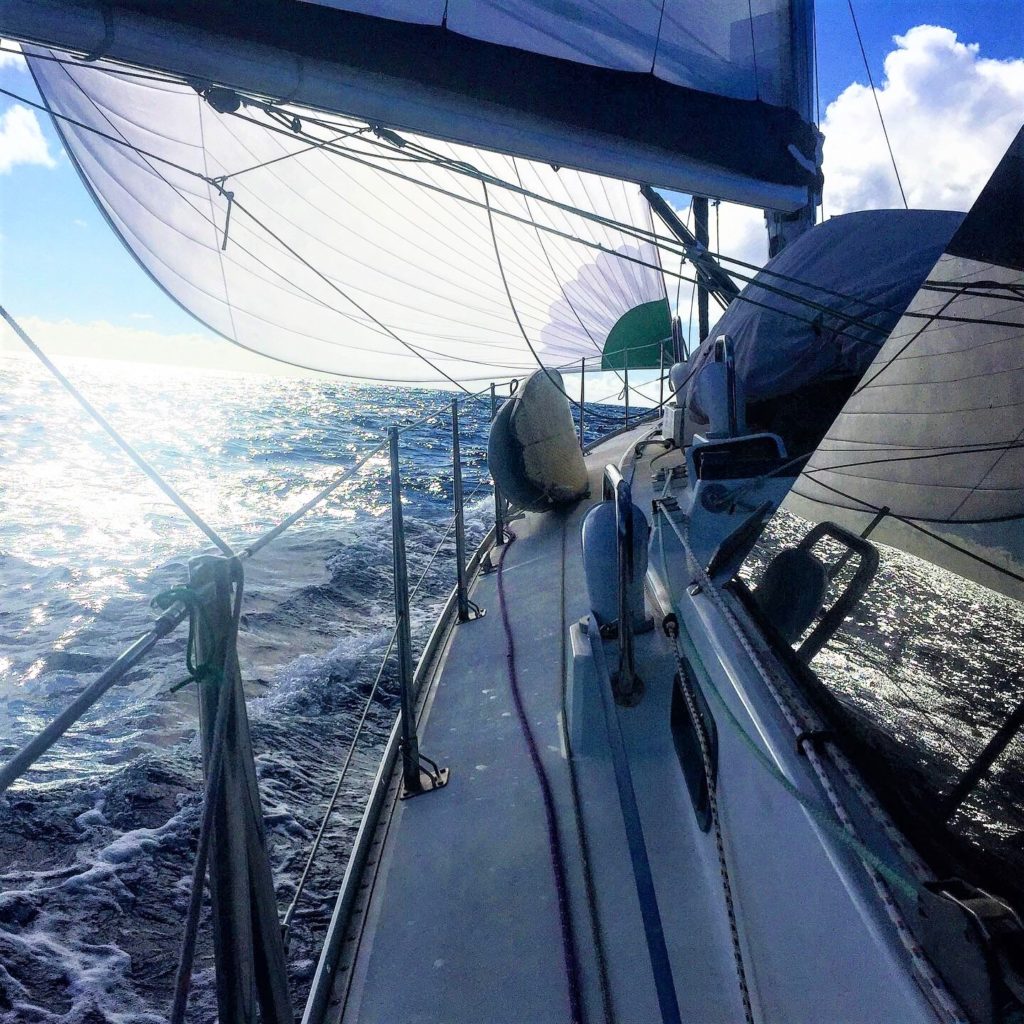
Are we really going to do this?
A combination of Covid related country closures, avoidance of cyclone season together with a yearning for more warm weather cruising and ultimately pointing towards home, brought us to the conclusion that sailing to French Polynesia was the best option for our family. (See previous post from our time in New Zealand to read more discussion about decision making during Covid times.)
It was not an easy decision to make. We were sad to leave good friends who’d decided to stay in New Zealand. And we would miss the several kidboats and friends heading for Fiji. A number of these boats are either New Zealand or Australian citizens, so don’t have the same concerns about being stuck in Fiji during cyclone season as we did. We were the only boat we knew of taking on this passage. So we wondered if this was really the right thing for us to do.
French Polynesia was opening to international air tourists in mid July. And their martime officials had permitted us entry (expecting to arrive in late July). But things could change on route as they had for others who were mid Pacific when the Covid crisis exploded. What would we do then?
Most folks to whom we mentioned our plan expressed concern about the passage. Typically folks don’t set out on this passage in NZ’s winter. And the general advice is to head fairly far south to take advantage of more westerly wind directions at lower latitudes which is a recipe for strong winds and big seas. But we had done our research on potential routes and knew it could be done.
In doing our research we came across the friendly Australian, Mick on SV Roam – a 47foot high performance catamaran (Schionning) who has blogged and posted youtube videos about completing the same passage at the same time of year two years in a row. Gavin called him up to chat about the passage and he was so friendly, helpful and encouraging. Both of Mick’s routes (which he sent to us) didn’t waiver too far off of the rhumb line -(direct distance as crow flies between two marks) so our fears of having to sail too far south were somewhat allayed.
Ultimately, going on an offshore sailing adventure is a bit against the mainstream in itself so we are no strangers to doing things differently to others. Slingshot is a good boat, more than capable of the passage and Gavin and I felt that we could do this. When we factored in all of the variables, we felt good about our decision.
Ok, so were going. Gulp. But when to leave? And what would our weather strategy be?
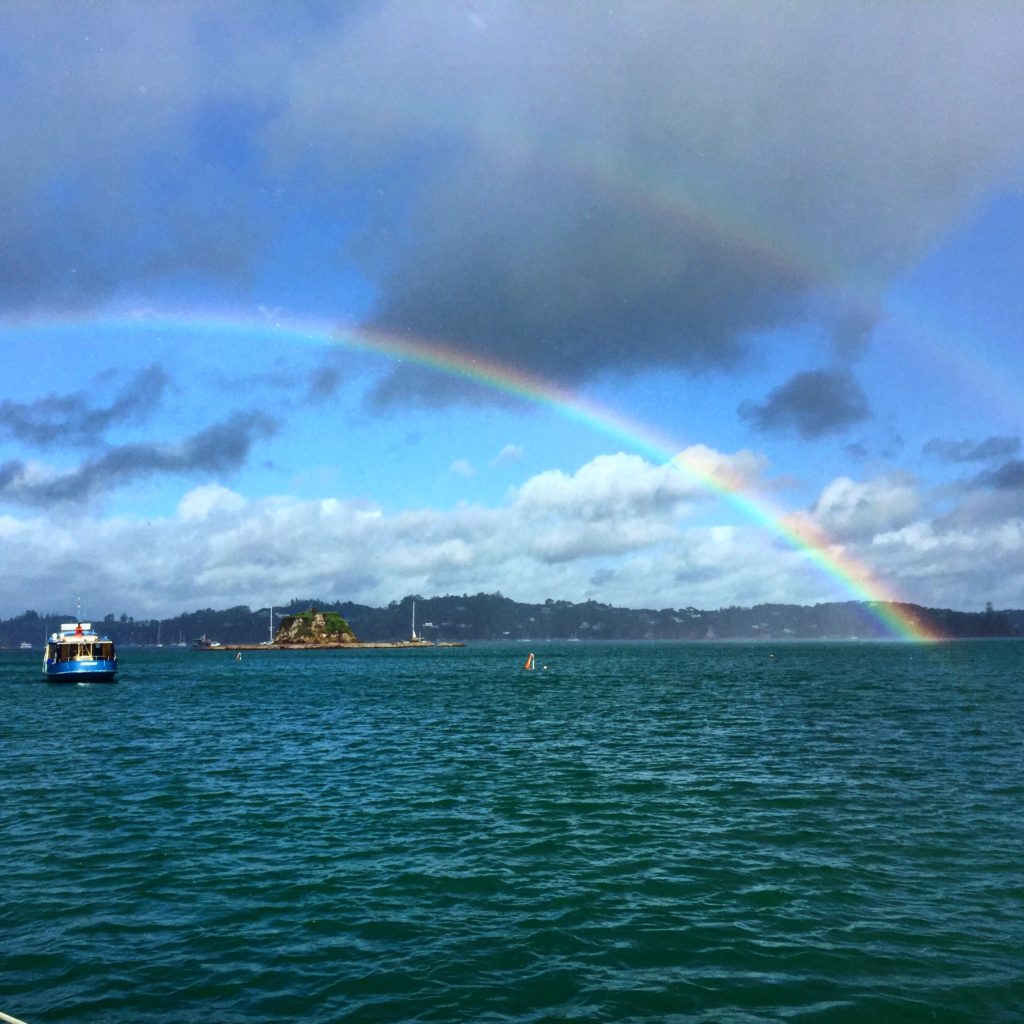
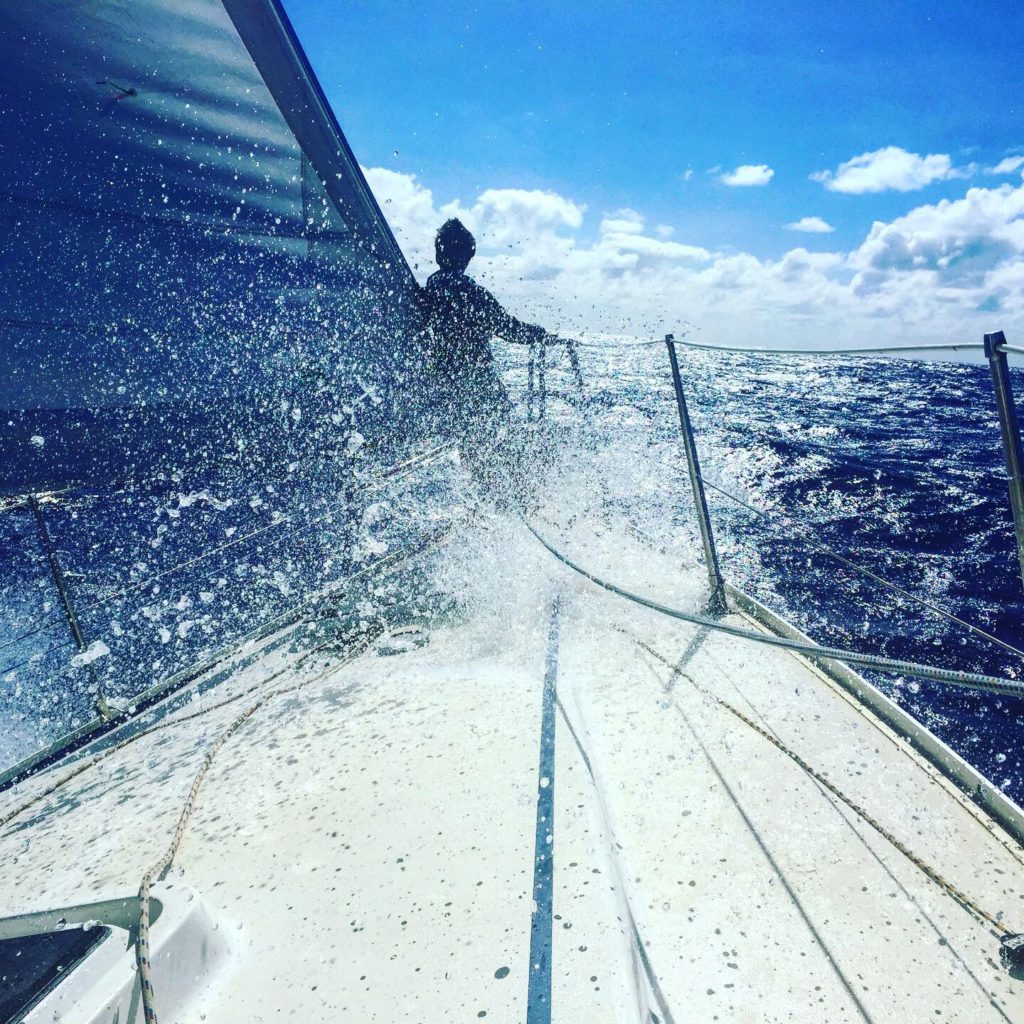
Weather Strategy
Weather strategy for this passage was more challenging than our previous passages to date. It’s not in the typical favourable downwind tradewind route at higher lattitudes (the majority of the route we sailed from Mexico to Tonga), and it involves being exposed to a large area for a long period of time (about 12 to 15 days for us) where lows routinely pass through. This is in contrast to the belt of tradewinds which, in non-cyclone season- does not have the risk of low pressure systems passing directly overhead.
Our general strategy was to look for a slow moving high pressure system over Australia and the Tasman sea moving north across of New Zealand and our plan was to leave after the cold front (which follows the high) passed over us. This would give us a downwind passage for as long as possible. As the next cold front overtakes us about 7 to 9 days after leaving New Zealand, we would position ourselves further north to hopefully reduce the intensity of the cold front. Then, we would again catch the following winds after the front passes over and hopefully be south and west enough to finish with a reach across the trade winds into Tahiti.
So we worked busily, completed our departure paperwork, provisioned and did any last minute boat jobs so we were ready to leave when we needed to. Luckily, Gavin had been steadily tackling boat maintenance and jobs during our time in New Zealand, so we were ready to go.
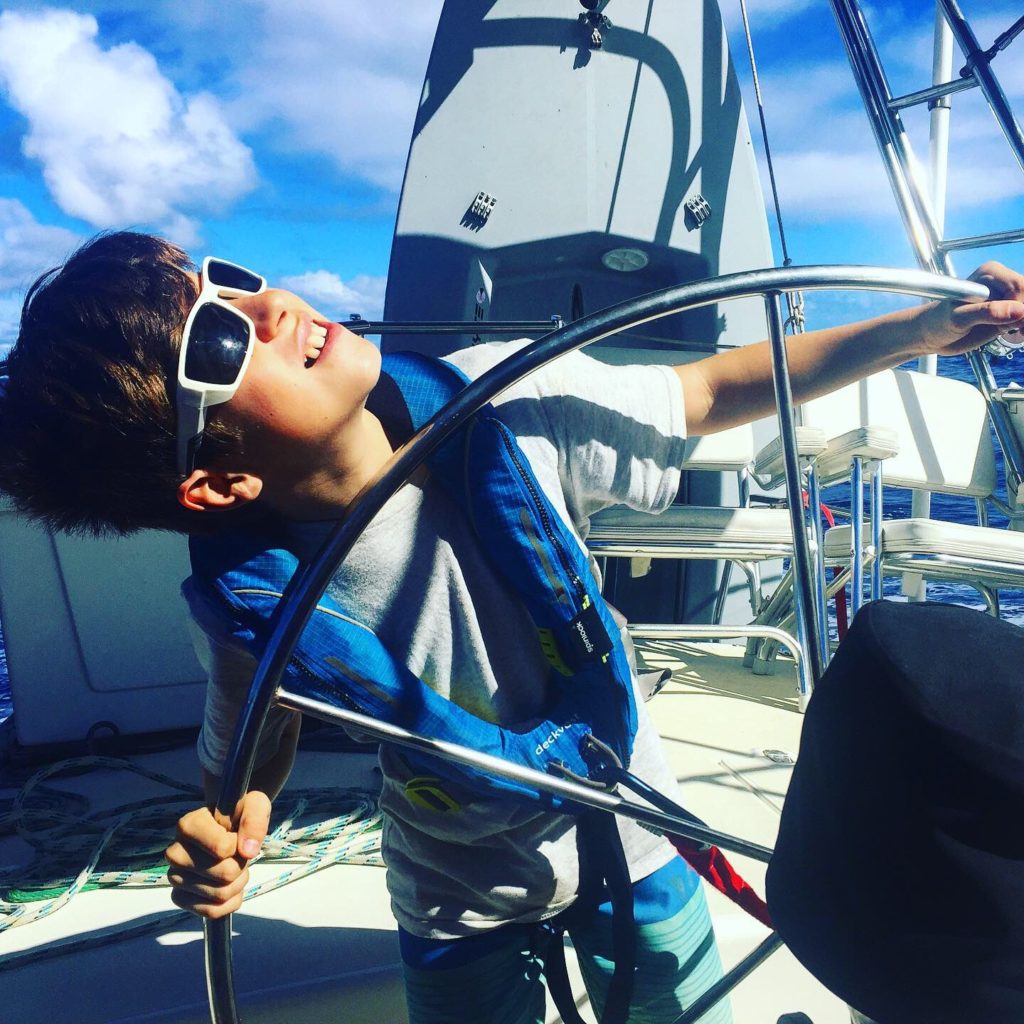
Gavin, are we leaving tomorrow?
The tricky piece was choosing which low to leave after and what the following low would look like.
There was a weather window approaching which all the folks departing to leave to Fiji were planning to leave on. Should we choose this window too? The approaching low looked fine, but it was the following low that we saw brewing off of Brisbane that worried us. It was much further north than most lows during the winter and we were worried about getting hit directly when we were midway to Tahiti.
The day before we were planning to leave, I confirmed, “Gavin, are we leaving tomorrow?” After looking at the latest weather, he hedged – “I’m not sure, I don’t like the look of that low off of Brisbane….”
I take part in weather discussions and analysis with Gavin, though he is definitely superior in his understanding, knowledge and experience with weather routing. If we didn’t leave on this weather window, that was fine (and all part of being flexible leading up to passage making) but I wanted to understand more about how to evaluate the lows following the one we would leave on – and theirlonger term movement. How would the low off of Brisbane behave? Would it stall, move quicker? Also, the weather strategy in these lower southern lattitudes and the direction we were heading and length of passage made this more complex and challenging weather strategy than on previous passages.
I like gathering as much information as I can when it comes to big decisions, so I decided to call an expert – Bruce – an experienced and well regarded meteorologist who provides weather routing services for yachts in the South Pacific. He also provides weather advice for the Australian Olympic team.
Bruce’s advice? The low off of Brisbane will stall and we were safe to leave. Wow! Really?! His advice gave us (me) the added confidence to go. Once the decision was made, the next steps were smooth. We were already ready to go so we confirmed our checkout with customs, filled up with fuel and departed early the next morning.
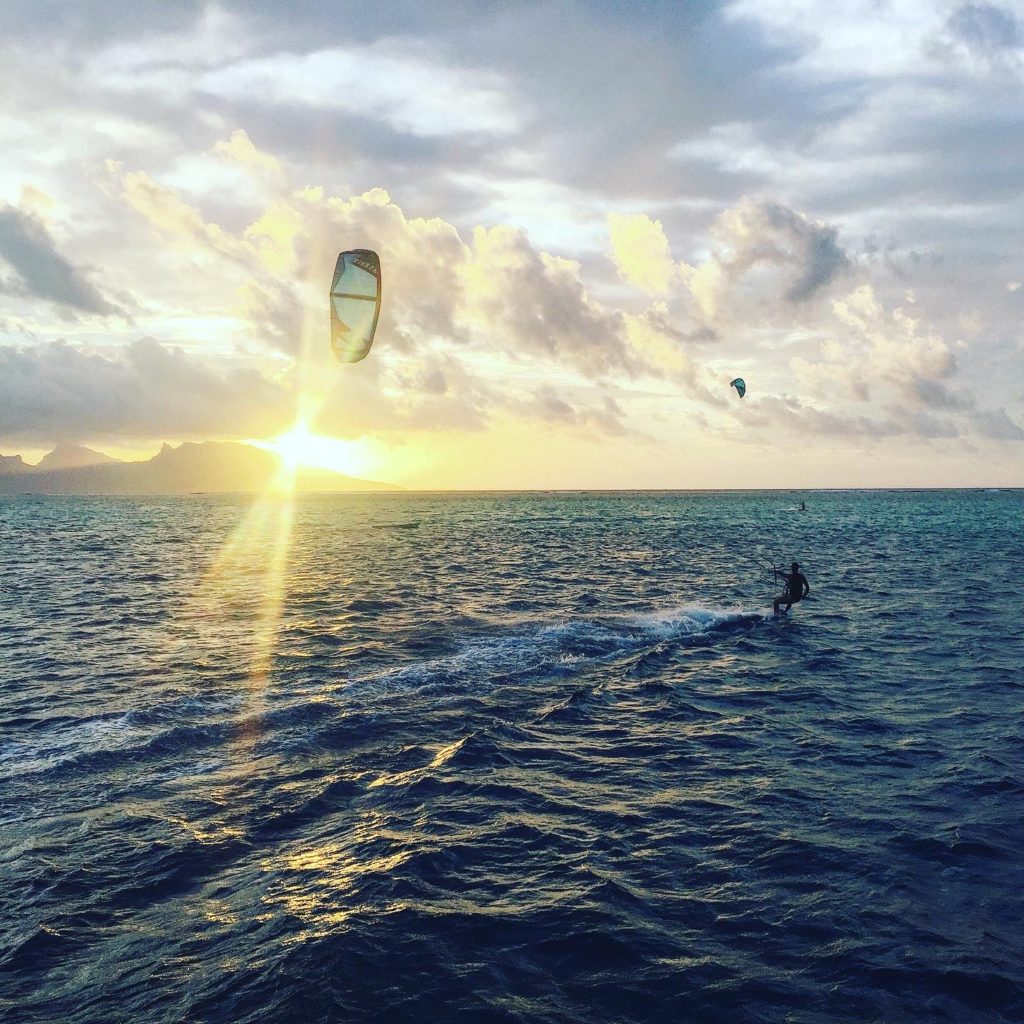
First Days – Breeze, Confused Seas and first time for our Third Reef
We watched a furious hail storm pass over us as we said goodbye to friends in the Opua marina and completed our check out procedure. The low was passing by us bringing rain and strong winds. Time to go!
We set off early the next day and got our sea legs under us. As we got further away from the protection of New Zealand the seas and breeze increased. The gusts were well into the 30’s and packed what felt like a considerable punch with cool dense air. We put the third deep reef in our main (first time of our trip that we had put in the third reef!) and rode out the multi directional 1.5 m seas. But we were heading down wind in the right direction – to a way point not too far south of the rhumbline.
Gradually, the wind decreased over the next days and we kept adding sail area. We enjoyed a couple of days sailing with our large A4 asymmetrical kite making good distance and speed. All was good.
Albatross – A highlight of our passage
One of the best parts of this passage was watching the Albatross swooping around Slingshot. They are truly magnificent birds, with wingspans well over 6 feet. We watched them for hours as they glided effortlessly over the waves.
These birds are found at lower and higher lattitudes because they depend on the consistent stronger winds. We read that they can cover up to 1000 km per day using minimal energy, taking advantage of the wind and waves to glide.
After years of watching sailing videos of intrepid sailors tackle the Southern Ocean often with images of albatross visiting them along the way, we felt like we were earning our sailing stripes by sailing within 5 degrees of the Southern Ocean.
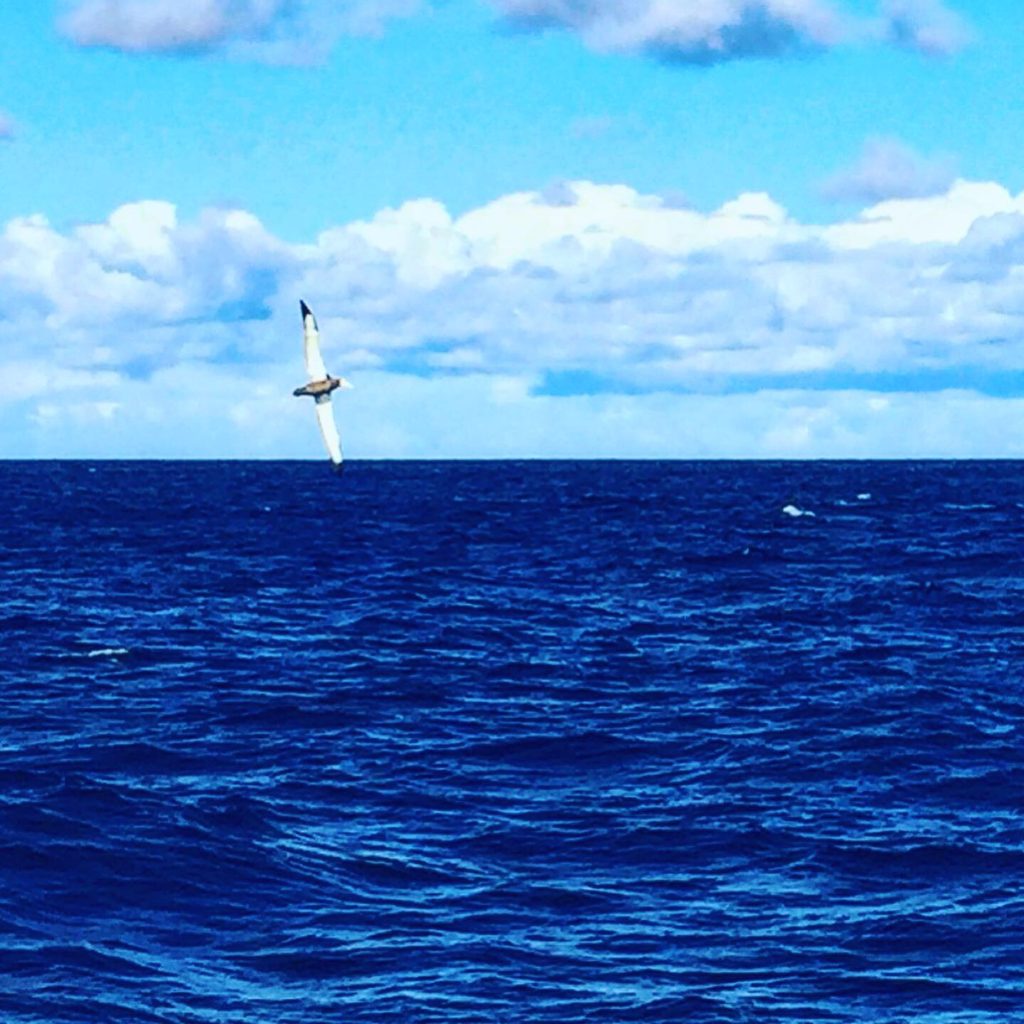
Was anyone seasick?
After thousands of miles of offshore cruising, we’ve figured out what works for us as far as seasickness prevention goes. In speaking with other cruisers – usually at least one person aboard will suffer from seasickness at some point. And it seems everyone has their own system, usually worked out by trial and error, to try different combinations of medication and/or holistic type therapies.
On Slingshot, two of our crew suffer from seasickness – Gavin and Nathan. From previous posts you might have read about a nasty seasickness experience we had (exiting San Francisco under Golden Gate Bridge with opposing wind and current – dramamine did not help us in these conditions). Through trial and error, we’ve landed on over the counter Meclezine tablets (can purchase in the USA, not in Canada). Holistic therapies just haven’t worked for us. Generally, taking these tablets at least 12 hours before entering swells does the trick. I remember being worried that we’d have to cancel our entire offshore cruising plans when we’d had that full terrible day of seasickness with Nathan. We are quite amazed and how well these work for us. And then moderating intake of one or less tablets every 12 hours, weening off mid passage, depending on how people feel.
Luckily Julia and I are fine and so far, (duly tested on this recent passage) we have felt fine up and down below in some bumpy conditions!
Mid-Passage – Light air downwind sailing and motoring.
After the big breeze to start our passage the wind dwindled over the following days and we alternated between days of motoring and sailing downwind in light airs. We were aiming for a waypoint about 10 to 15 degrees west of the rhumbline in order to position us further west to make the final stretch into Tahiti at a better angle against the tradewinds.
We carry 1000Lires of fuel on Slingshot and we were happy to have this capacity. Alternating between sailing in light air and motoring we were covering about 160 miles per day. This was less than our several back-to-back days of 200miles plus reaching in the tradewinds, but given the conditions, we were happy to be able to maintain a consistent pace.
Watchkeeping Schedule – 14.5 days of sleepless nights!
This was the longest passage Gavin and I have done with only the two of us sharing night shifts. At the beginning of our trip I would have been concerned about this, but we’ve eased into doing longer and longer passages just the two of us and overall we managed quite well over this passage.
We generally divide the passage into 3 hour chunks, with the kids being assigned shorter watches in the afternoon/evenings and during meal prep.
It also helped that we were on summer vacation during this passage so we didn’t have formal schooling goals to tick off.
So this meant that on the overnight stretch, Gavin and I each took on 2 three hour segments – he’d do 6 to 9pm, then 12 to 3am, and I’d do 9 to midnight, then 3am to 6am. Then we’d each have a nap during the day. This schedule left us fairly well rested.
Some folks prefer to do one shift each night between the two of them, one person staying up as long as they can, then the other taking the remainder of the night. That way, your sleep is not interrupted twice. But we like the certainty of 3 hour shifts and found it relatively easy to fall asleep during our time off shift.
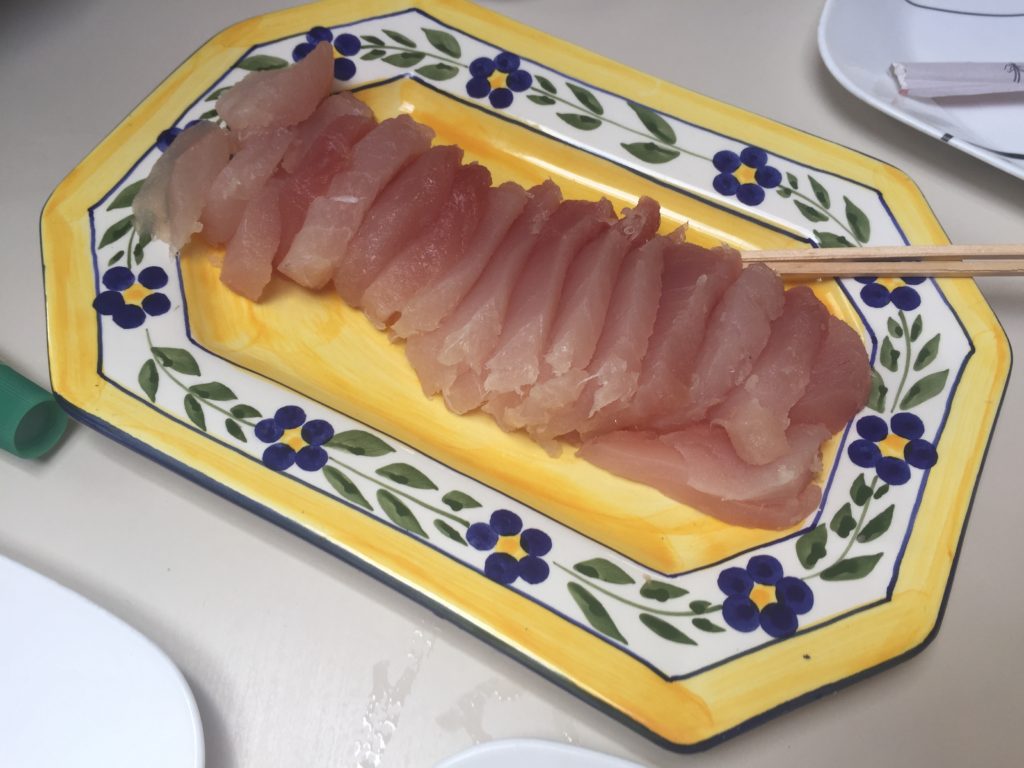
That Weather Forecast Does Not Look Good!
Half way to Tahiti the low that we’d originally been concerned about off of Brisbane, caught up and looked forecast to pass very close to our position. A dark red (users of predict wind will understand) rotating patch was building across our path showing strong headwinds and large swells directly in our path.
Oh no. We had some uneasy hours as we plotted out alternate routes we could sail to seek shelter and we emailed DPAM (French authorities) with requests to seek shelter in the Austral Islands if needed in order to avoid the low.
Luckily, subsequent forecasts showed the low slowing slightly and we were able to maintain a consistent and fast enough speed so that we would avoid the worst of the weather.
We’d been getting reports from friends still in New Zealand about a 500 year storm that passed over New Zealand and caused flooding high winds and damage. Yikes! This was some low that was on our tail.
Last 4 days- Upwind into Tahiti
Because of the timing of a mature high which coincided with our approach to Tahiti, we had 90 degree headwinds rather than 120 degree tight reaching winds for the final 4 days.
This meant that we were beating (sailing close hauled) into reinforced tradewinds of 20 to 30 knots. It was during this stretch that we felt particularly thankful to be aboard Slingshot. The toughest days were when these strong winds coincided with 2.2m short period swells (9seconds). I don’t think many boats are comfortable in these conditions. But in Slingshot we were reasonably comfortable – protected by the hard dodger – waves routinely splashed over the bow and hit the dodger. And we reduced sail area to have a fine balance between upwind progression and minimizing the inevitable banging over the waves. In the worst of it (overnight of course) we motor sailed with main only, as the jib (even with a reef) was too much power. We were not racing and opted for more comfort as opposed to more speed.
I remembered joyfully sailing the other direction in similar conditions and being thankful that we didn’t have to go upwind. Now, this is what we were doing.
Final Approach – Tahiti Seemed Even Sweeter the Second Time Around
As it turned out we only had to do two tacks to reach Tahiti. And for the last 200 miles we were able to bear off slightly with more of a reaching angle as opposed to hard upwind.
We arrived in Papetee at sunrise, happily spotting the green hills and inhaling the sweet smells of earth and flowers.
We were impressed with efficiency of the French Polynesian authorities. We were able to arrange Covid tests the same day – with friendly nurses in hazmat suits meeting us dockside, and our negative results being available the same evening allowed us to get off the boat the next day and enjoy the delights of Tahiti.
Carrefour supermarket in Tahiti is the best in the entire Pacific – wide selections of french cheeses and proscuitto, crepe making machines, huge pieces of freshly caught Tuna, and of course freshly baked french baguettes.
And the Airport anchorage where we were located happened to have wide open stretches of flat water with consistent tradewinds, perfect for kiting.
It was the perfect way to recover after a long challenging passage.
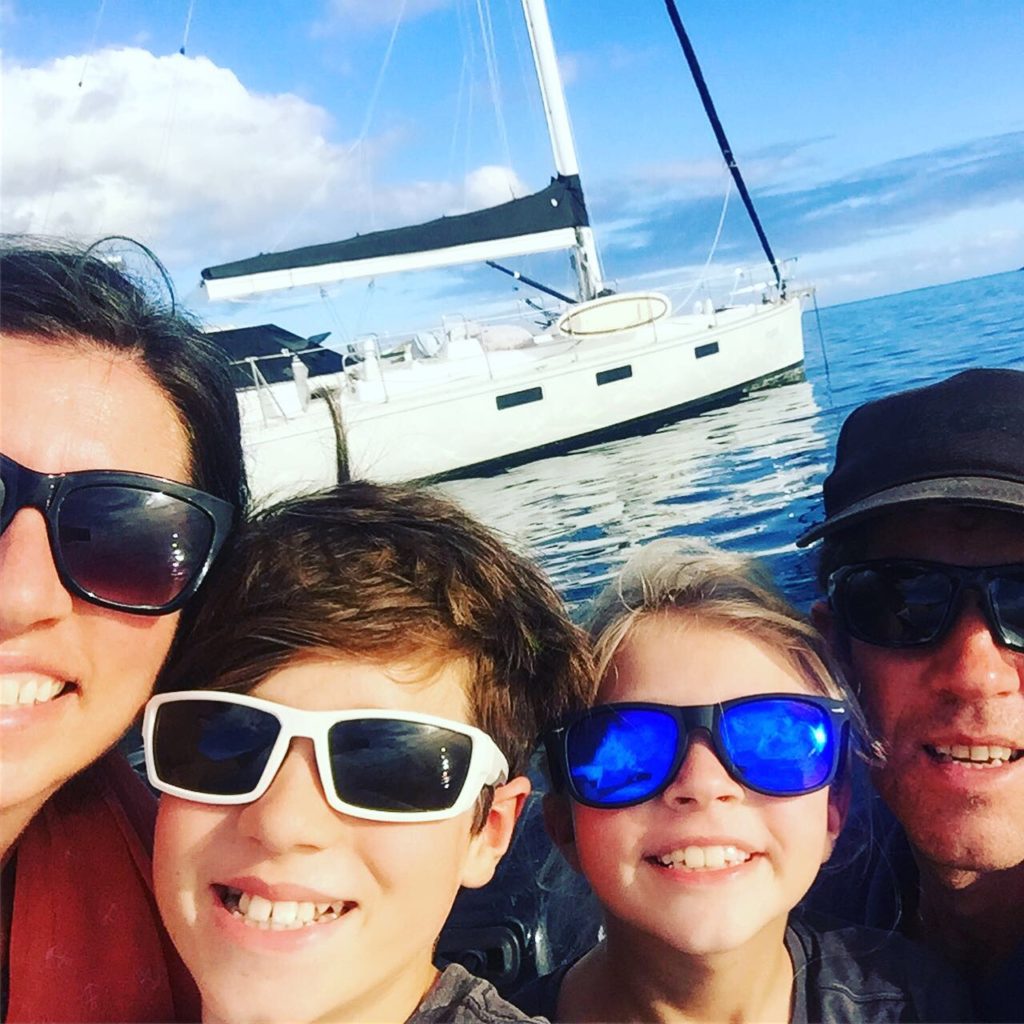

Awesome! You are definitely braver than I.!!!! So helps to be young.
There are many reasons for taking more than one season to see French Polynesia. Not all are obvious until you’ve been here for a while and have talked to some of the many international cruisers who have spent multiple years here and in the western Pacific. At present, very few Americans spend more than three months in French Polynesia and only a few take more than six months to cross the Pacific to New Zealand or Australia during their first year. After that the normal Milk Run brings cruisers from New Zealand back north to Fiji or Tonga, then all the way to Australia at the end of their second southern cruising season.
Thank you for your comment – Yes many folks do pass through this area too quickly! We debated staying in French Polynesia for a year during our first season here, which a number of cruisers whom we’d met decided to do or had done previously. Ultimately we decided to push west after 3.5 months to keep exploring which turned out to be fortunate with hindsight as many of the cruisers who stayed are now precluded from heading further west for the time being. Now that we’re back in French Polynesia we are loving the added time to explore and discover many spots that we missed the first time.